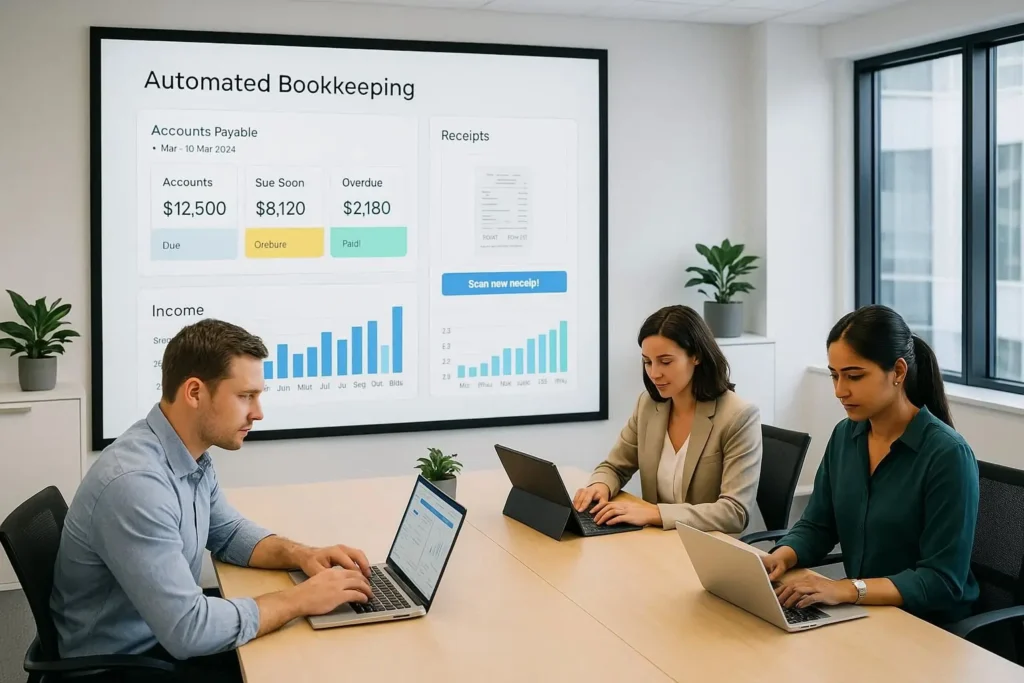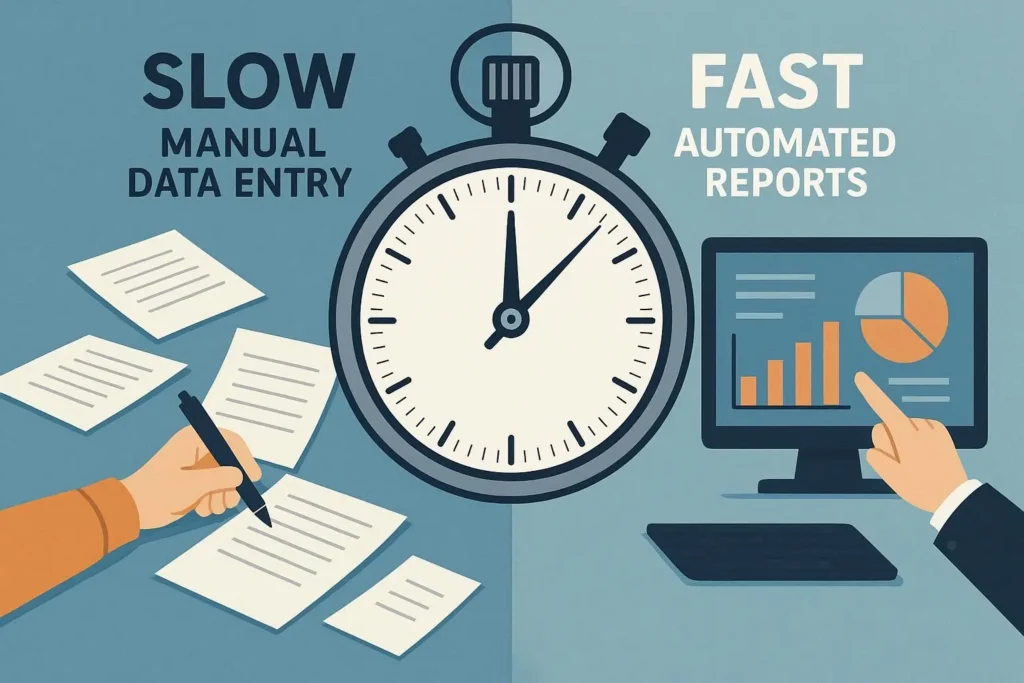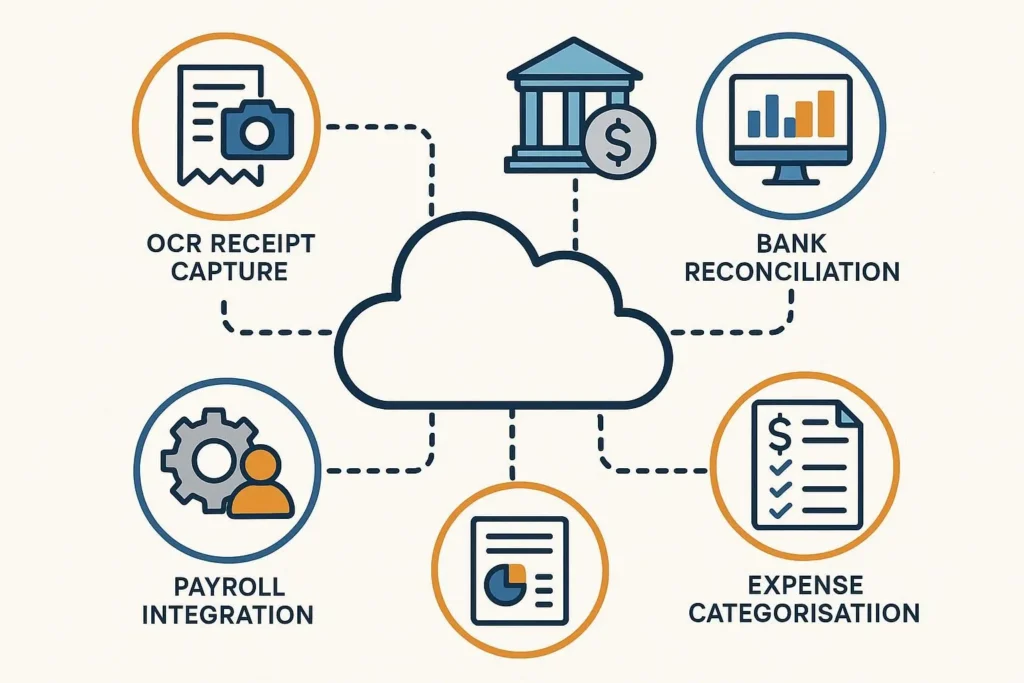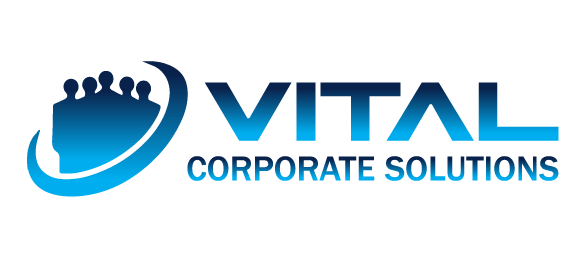Automated Bookkeeping Software: The Ultimate Guide for Australian Businesses
In today’s fast-paced business world, manual bookkeeping is quickly becoming outdated. With the introduction of automated bookkeeping software, Australian businesses now have the chance to save time, reduce errors, and stay compliant with ATO regulations. Whether you’re a small business owner or running a CPA firm, the right software can transform how you manage your finances.
What is Automated Bookkeeping Software?
Automated bookkeeping software is a digital solution that manages financial records using advanced features like OCR, AI, and integrations with accounting systems. Instead of manually entering data, the software captures receipts, categorises expenses, reconciles bank feeds, and generates real-time reports — ensuring accuracy and compliance.

Why Australian Businesses Need Bookkeeping Software
STP & ATO Compliance Made Easy
Automated software is designed with compliance at its core, helping businesses meet Single Touch Payroll (STP) and ATO reporting requirements effortlessly.
Time Savings for Busy Owners
Manual data entry wastes hours — automation frees up time for growth.
Accuracy and Reduced Errors
Human mistakes are common in manual bookkeeping, while automation ensures cleaner, more reliable records.
Cost Effectiveness Over Time
Although software requires upfront investment, the long-term savings in labour and efficiency outweigh the cost.
Live Financial Intelligence
Access real-time dashboards that provide actionable insights into cash flow, expenses, and profitability.
Scalability in Growing Firms
As your business grows, the software adapts without major disruption.
Peace of Mind
Know that your finances are up-to-date, compliant, and secure.
Key Features of Automated Bookkeeping Software
- Receipt Capture and OCR – Automatically extract data from scanned receipts.
- Expense Categorisation – Smart algorithms classify expenses into correct accounts.
- Bank Reconciliation – Match transactions with invoices and payments in seconds.
- Payroll Integration with STP – Ensure ATO compliance and streamlined payroll.
- Reporting Dashboards – Gain insights into performance with real-time analytics.

How to Get Started with Automated Bookkeeping Software
- Assess Your Business Needs – Define must-have features.
- Decide Between Cloud vs. Desktop Solutions – Cloud offers mobility, while desktop can suit firms preferring on-premises control.
- Check Integrations with Existing Tools – Ensure smooth syncing with CRM, POS, or inventory systems.
- Onboarding and Training – Train staff to maximise adoption.
- Run a Pilot – Test before full-scale implementation.

Cloud-Based vs Desktop Bookkeeping Software
- Cloud-Based: Accessible anywhere, real-time collaboration, automatic updates.
- Desktop: Secure, often better suited for firms preferring local control.
Features for Accountants and CPA Firms
- Multi-Client Management
- Custom User Access and Permissions
- Bulk Processing
- Audit Trails
How to Choose the Right Software
- Business size and complexity
- ATO & STP compliance
- Seamless integrations
- Reporting needs
- Budget
Automated Bookkeeping Software for CPA Firms
Firms benefit from scalability, high-level security, multi-entity data handling, and advanced reporting.
Business owners across Australia are increasingly switching to automated bookkeeping software for better compliance and efficiency. According to the Australian Taxation Office (ATO), cloud-based bookkeeping tools also simplify Single Touch Payroll (STP) reporting and tax obligations, making them a reliable choice for SMEs.
Wrapping Up…
Automated bookkeeping software is no longer a luxury — it’s a necessity for businesses that want to stay competitive in Australia. By reducing manual errors, ensuring compliance, and providing real-time insights, the right tool can give you the edge you need.

